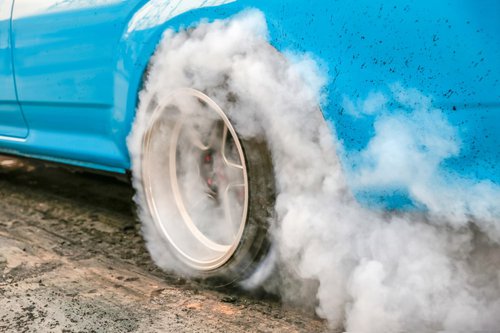Greater Toronto Area DUI Lawyers Explore Stunt Driving

Ontario Provincial Police (OPP) charged two motorists in as many days with going more than double the speed limit on Greater Toronto Area highways after the Thanksgiving long weekend. On Oct. 12 th , Aurora OPP arrested a Newmarket driver for driving 221 km/h on the 404’s southbound lane in the York region. This was followed on Oct. 13 th by Brampton OPP, who charged an Etobicoke driver for going 201 km/h on Highway 410. Not to be outdone by their urban counterparts, a motorist in Ontario’s rural Lennox and Addington County was charged with driving 252 km/h on Highway 401 on Oct. 16th. As of the end of September, the OPP reported that stunt-driving arrests in the province had increased by 20% year-over-year , with more than 4,395 stunt-driving charges laid so far in 2023.
Given the dramatic increase in stunt driving arrests and seeming disregard by many Ontario motorists for the consequences if caught, the defence lawyers of the Greater Toronto Area’s TorontoDUI thought it might be a good time to review precisely what stunt driving is. While stunt driving arrest numbers in Ontario have not caught up to the number of motorists annually charged with DUI — 15,321 in 2022 — stunt driving is equally, if not more, dangerous than driving while impaired.
So, What is Stunt Driving?
Even if unfamiliar with laws against stunt driving, you’ve probably surmised from the above that driving at a ridiculous speed over the speed limit constitutes the offence. However, the legal definition of stunt driving in Ontario goes far beyond excessive speed to encompass numerous other dangerous driving behaviours.
Enacted in 2008 under Section 172 of Ontario’s Highway Traffic Act covering races, contests, and stunts, the excessive speed component of the law prohibits driving more than 40 km/h over the speed limit where the limit is less than 80 km/h, or driving more than 50 km/h over the limit where the speed limit is 80 km/h or more. Operating at 150 km/h or more constitutes stunting regardless of the speed limit. So, note that even if the speed limit is 110 km/h, you can be charged with stunting if you go more than 40 km/h over that limit despite the limit being over 80 km/h.
Some of the numerous other prohibitions in the law help explain why it is referred to as “stunt” driving. Consider the following stunts that qualify as stunt driving:
- Driving in a manner suggesting that you intend to lift some or all tires from the road surface — and, yes, popping a wheelie on a motorcycle is included.
- Burning rubber, squealing rubber, or otherwise driving in a manner designed to make some or all tires lose traction.
- Driving while not seated in the driver’s seat.
- Driving with someone in the trunk of the car — sneaking into the drive-in theatre is no longer an option!
- Doing donuts or otherwise spinning around or drifting with limited control.
- Driving with the unjustified intent to get as close as possible to another vehicle, pedestrian, or object on or near the roadway.
- Stopping or slowing a motor vehicle with the intent to stop, slow down, or interfere with the movement of another vehicle — thus, be careful about cutting other drivers off.
- Driving in ways that suggest an intention to prevent another vehicle from passing.
- Hitting the gas when a traffic light turns green to execute a left-hand turn before the oncoming traffic can proceed.
Street racing as a component of the stunt driving law gets its own dedicated section. This section defines street racing as:
- Two or more motor vehicles driving at a speed markedly above the lawful limit and in a manner suggesting the drivers are competing.
- Driving in a manner that indicates the intention to chase another vehicle.
- Outdistancing other motor vehicles while driving at a speed markedly above the lawful limit.
- Repeatedly changing lanes at high speed near other vehicles to advance through the ordinary flow of traffic.
The Penalties for Stunt Driving in Ontario
Other than DUI and motor vehicle offences that injure or kill other people, stunt driving carries some of the stiffest penalties among all Ontario traffic violations. Drivers arrested for stunt driving face an immediate 30-day driver’s license suspension and 14-day impoundment of the vehicle used, no matter who owns it. A first-time stunt driving conviction carries the following additional penalties:
- Minimum one-year license suspension up to a maximum three-year suspension.
- Minimum $2,000 fine up to a maximum of $10,000.
- Potential jail term of up to six months.
- Six demerit points.
- Mandatory enrollment in a government-approved driver improvement course .
Subsequent stunt driving convictions carry longer driver’s license suspensions that can be ordered as lifetime suspensions starting with the third conviction. Additional convictions also increase the likelihood of a jail term and higher fines.
A stunt driving conviction can jeopardize your employment if it requires the use of a motor vehicle and inherently carries other costs, including:
- Significant increase in insurance premiums.
- Towing and impound fees.
- License reinstatement fees.
- Driver improvement course fees.
- Alternative transportation costs, as needed.
Stunt Driving is Not a Criminal Offence
The only good news regarding stunt driving penalties in all provinces is that it is not a criminal offence. That said, if your stunt driving were to result in injury or death, you would likely face criminal dangerous operation charges under Section 320.13 of the Criminal Code. The maximum sentence for dangerous operation of a motor vehicle causing death is life in prison when charged as an indictable offence and two years imprisonment as a summary conviction offence. The maximum for dangerous operation causing injury is a respective 14 years and two years imprisonment.
Challenging Stunting Charges
The legal team at TorontoDUI does not specialize in defending clients against stunt driving charges but knows there are ways to challenge them in court successfully. Absent mounting a technical challenge against the police officer’s radar or laser calibration, speed-related stunt driving charges are difficult to dispute. However, many of the other “stunts” prohibited by the law offer defendants an opening due to their subjective nature. While a police officer may have an apparent edge in court when giving testimony about stunting charges, police are human and can make mistakes. You may have a winnable case if you can present evidence, witnesses, and a believable narrative that disputes an officer’s subjective interpretation of an alleged stunting incident.
With decades of success securing favourable results for their Greater Toronto Area DUI clients, contact TorontoDUI to begin strategizing your defence.
